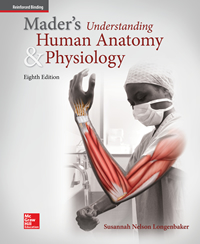1 A) skeletal B) smooth C) cardiac 2 A) skeletal B) smooth C) cardiac 3 A) skeletal B) smooth C) cardiac 4 A) movement B) joint stabilization C) heat production D) All are functions of the muscular system. 5 A) endomysium B) epimysium C) perimysium 6 A) endomysium, epimysium and perimysium B) endomysium, perimysium and epimysium C) perimysium, epimysium and endomysium D) epimysium perimysium and endomysium 7 A) endomysium B) fascicle C) muscle organ D) perimysium 8 A) T-tubules. B) sarcoplasmic reticulum. C) myofibrils. D) sarcomeres. 9 A) T-tubules B) sarcolemma C) sarcoplasmic reticulum D) mitochondria 10 A) hemoglobin. B) erythrocyte. C) sarcoplasm. D) myoglobin. 11 A) actin. B) myosin. C) myoglobin. D) tropomyosin. 12 A) only actin B) only myosin C) actin and myosin D) actin, troponin and tropomyosin 13 A) H-zone. B) Z-line. C) A band. D) I band. 14 A) Impulses travel down the T-tubules. B) Calcium ions are released into the sarcoplasm. C) Actin filaments slide past myosin filaments. D) ATP is hydrolyzed. 15 A) troponin B) actin C) myosin. D) tropomyosin 16 A) Binds to the myocin cross-bridges to activate them. B) Binds to troponin to move the tropomyosin away from actin's active sites. C) Binds to ATP to hydrolzye it. D) All of the above. 17 A) myosin cross-bridges to bend. B) pulling of the thin filaments toward the middle of the sarcomere. C) power-stroke. D) All of the above. 18 A) The nerve impulse stops. B) Calcium ions are pumped back into the SR. C) ATP releases myosin from the actin. D) All of the above must occur. 19 A) cellular respiration. B) lactic acid breakdown. C) creatine phosphate breakdown. D) fermentation. 20 A) when muscle fibers run out of ATP. B) at the beginning of the latent period. C) at the beginning of the relaxation period. D) when lactic acid is completely broken down. 21 A) fatigue B) oxygen debt C) lactic acid accumulation D) B and C, but not A 22 A) muscle twitch B) myogram C) summation D) motor unit 23 A) contraction B) relaxation C) fatigue D) latent 24 A) atrophy. B) stronger and stronger muscle contractions. C) all-or-none. D) fatigue. 25 A) atrophy. B) fatigue. C) hypertrophy. D) hyperplasia. 26 A) slow B) fast C) fatigue at same rate D) they do not fatigue 27 A) slow twitch B) fast twitch 28 A) slow twitch B) fast twitch 29 A) antagonists B) agonists C) synergists D) prime movers 30 A) size B) shape C) direction of fibers D) location 31 A) size. B) shape. C) action. D) both size and location. 32 A) flex the ulna. B) flex the wrist on the ulna side. C) extend the wrist on the ulna side. D) extend the ulna. 33 A) origin. B) insertion. 34 A) Buccinator B) Frontalis C) Orbicularis Oculi D) Zygomaticus 35 A) Buccinator B) Frontalis C) Orbicularis Oris D) Zygomaticus 36 A) chewing B) compression of the cheeks C) frowning and pouting D) smiling 37 A) Buccinator and temporalis B) Masseter and temporalis C) Masseter and orbicularis oris D) Masseter and zygomaticus 38 A) Abducts the arm B) Breathing C) Shrugs the shoulders D) Turns the head side to side 39 A) Buccinator B) Serratus anterior C) Sternocleidomastoid D) Trapezius 40 A) expiration: inspiration B) inspiration: expiration C) flexing the trunk: extending the trunk D) extending the truck: flexing the trunk 41 A) diaphragm B) external intercostal C) internal intercostal D) rectus abdominis 42 A) Rectus abdominis B) Serratus anterior C) Sternocleidomastoid D) Trapezius 43 A) Biceps brachii B) Deltoid C) Trapezius D) Triceps brachii 44 A) Biceps brachii B) Latissimus dorsi C) Pectorialis major D) Triceps brachii 45 A) Latissimus dorsi B) Pectoralis major C) Serratus anterior D) Trapezius 46 A) cramps. B) spasms. C) strains. D) sprains. 47 A) Infraspinatus, supraspinatus, teres minor and subscapularis B) Intraspinatus, supraspinatus, teres minor and teres major C) Supraspinatus, subscapularis, teres major and teres minor. D) Deltoid, supraspinatus, infraspinatus and teres major 48 A) abducts: adducts B) adducts: abducts C) extends: flexes D) flexes: extends 49 A) abducts: adducts B) adducts: abducts C) extends: flexes D) flexes: extends 50 A) Abduct the thigh. B) Adduct the thigh C) Extend the leg D) Flex the leg 51 A) Abductor group B) Adductor group C) Hamstring group D) Quadriceps group 52 A) anterior abdomen B) anterior thigh C) posterior thigh D) posterior arm 53 A) abducts: adducts B) adducts: abducts C) extends: flexes D) flexes: extends 54 A) Biceps brachii B) Rectus femoris C) Semimembranosus D) Semitendinosus 55 A) gastrocnemius B) semitendinosus C) tibialis anterior D) vastus lateralis 56 A) cramp. B) spasm. C) strain. D) sprain. 57 A) cancer B) diabetes C) fibromyalgia D) tetanus 58 A) a sprain. B) fibromyalgia. C) tendonitis. D) muscular dystrophy. 59 A) myasthenia gravis B) amyotrophic lateral sclerosis C) fibromyalgia D) Lou Gehrig's disease





